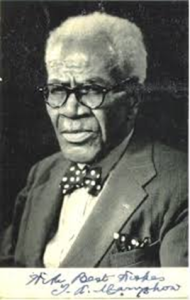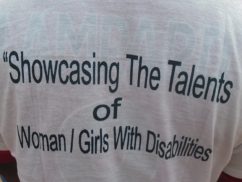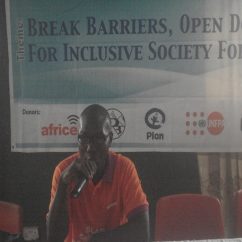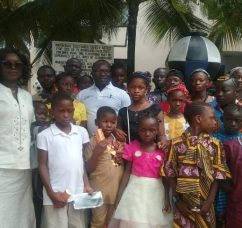This tradition with which the old folks have grown up, is an age-old traditional experience. These “crick-crack!” story-telling sessions are framed in the following setting: It is a warm, moonlit night in a Caribbean village as crickets and fireflies dance in the tropical air. Under a damsel tree in a neighbour’s yard, eager village children gather for a story. The nearby trees, casting giant shadows around them, create a mood of camaraderie and expectation. Everyone is seated on the ground, in a semi-circle and a Caribbean folktale, from one of the old folks, is told to the delight and participation of its eager audience.
However, in modern times, the traditional mode of transmission, images of the folks and the physical story-telling sessions, have diminished. This dilemma, has been blamed on succeeding generations of Caribbean youths, both in the region and abroad, who seem to have lost touch with this once vibrant traditional experience. In fact, many Caribbean youths (especially those in the Diaspora), are somewhat oblivious of the very existence of the language, lore, and stories of the past. As a result of this situation, there is a need to preserve the tales and their essence in Caribbean culture, as well as their meaning in Caribbean people’s lives. But times have changed and there is a suggestion, voiced by Anancy in the Chorus, (Act 5 Sc 3), that the environment must adapt to the changes, in order for this aspect of the cultural tradition to survive. Therefore, new methods of transmitting the tales and ensuring their longevity for succeeding generations, have emerged in the 20th century, with the use of technology and electronic devices. The tales are now recorded, making their existence permanent, and easier to share with a global audience.
In the Phantom of the Great House, (Act 2 Sc5), this concern is articulated by each member of the Chorus, (Anancy, Cricket, Firefly, Frog, and Papa Bois). These night-time creatures, symbolically, represent the older generation, or those who have, and continue to participate in this cultural activity. Their first-hand experiences of the transmission of the language and lore of the people, make them credible witnesses and judges of the waning nature of this cultural stabiliser. Their evaluation of the status of the folktales and the peoples’ attitudes to them are presented as a lament, that seeks to interrogate their dilemma, as a call to revitalise interest in the story-telling tradition. Simultaneously, as a Chorus, they appear to recognise the need to adapt to the changing environment. With the disappearance of the folks from the traditional story-telling setting, Anancy and Cricket in Act 5 Sc 3, highlight the interest shown in the folktales by academia, could suggest all is not yet lost. Strategically, the tales’ ‘permanent’ formats, would enable masses to be acquainted with them, in ways that do not necessarily need a physical gathering of people on a moonlit night, because technology makes it possible for individuals to both hear and see the tales, in the comfort and privacy of their own spaces.
One element of ‘advancement’ in the landscape that impacts on storytelling at night, is presented as the pervasive nature of electricity everywhere. In Act 2 Sc 5, Cricket claims, it has robbed them of the storytelling aura. Added to the loss of the story-telling atmosphere, are other characteristics of the old format of transmission, these “live” characteristics were helpful in creating meaning. They took the form of voicing approval, especially from “live” responses; ensured camaraderie or solidarity, in the live atmosphere among the fellowship of brothers and sisters; generated a heightened sense of significance, expressiveness, and group actions. Therefore, the group dynamics are lost through the solitary experience of listening to a recording, alone. Throughout the play, this sense of loss is demonstrated by the Chorus’ alternative, isolated, activities; playing dominoes by themselves, having a cook-up or just liming; as a push against current 21st century’s “indoor generation” ideals.
Evident in Caribbean storytelling are characteristics that highlight a blend of cultural and linguistic influences. These are shown by the inclusion of colour, humour, folk- wisdom, different language registers and thought-processes, which suggest there is still the transmission of caution, verbal defence, and attempts to instil good sense via their didactic aims and objectives…….
NB: (Taken from “The Introduction” to the play: The Phantom of the Great House – ISBN 978-1-8381068-4-3), which has an expanded discussion on the storytelling issue, proverbial sayings characteristic features of the Creole languages, and the polylingual environment, other characteristics of Caribbean Orature in this text and many more.









